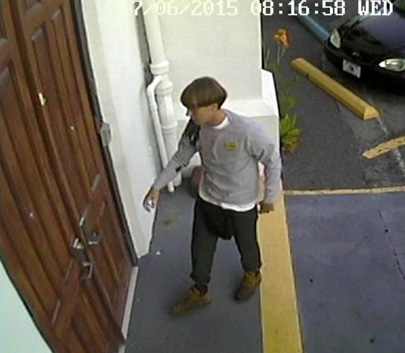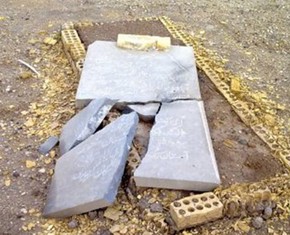The views expressed in our content reflect individual perspectives and do not represent the authoritative views of the Baha'i Faith.
Fathers have lost their sons, and sons their fathers. Mothers have wept away their hearts over dead children. Children have been orphaned, women left to wander, vagrants without a home. From every aspect, humankind hath sunken low. Loud are the piercing cries of fatherless children; loud the mothers’ anguished voices, reaching to the skies.
And the breeding-ground of all these tragedies is prejudice: prejudice of race and nation, of religion, of political opinion; and the root cause of prejudice is blind imitation of the past — imitation in religion, in racial attitudes, in national bias, in politics. So long as this aping of the past persisteth, just so long will the foundations of the social order be blown to the four winds, just so long will humanity be continually exposed to direst peril. – Abdu’l-Baha, Selections from the Writings of Abdu’l-Baha, p. 247.
Lee Harvey Oswald.
Those three names bring up a common image for many people—a crazed lone gunman, acting out his disturbed fantasies of power, revenge, self-importance and hatred.
Dylann Storm Roof.

Dylan Storm Roof entering the Emanuel Church in Charleston
This young man randomly gunned down nine African American worshippers in a church in Charleston, South Carolina. He carried a .45 caliber handgun into that church, and in the most chilling and horrible part of the story I’ve heard, actually sat down with people in a Bible study class for an hour before he started to shoot. (The media still calls him a “suspect,” but the eyewitnesses he left alive have erased any doubt that he did it.) His casual racist remarks to others, his confederate flag license plate, his white supremacist jacket patches notwithstanding, you can bet that we will soon hear the crazed lone gunman myth applied in the case of this latest American mass murderer.
We have no idea yet, as this is being written, whether Mr. Roof will mount an insanity defense in court—but that has certainly been the pattern of the most recent mass murderers, at least the ones who didn’t commit suicide immediately after carrying out their carnage.
But is the Charleston church killer really a crazed lone gunman, a clinically insane victim-slash-victimizer? Or is he the sharp point of a racist spear, the latest armed and dangerous representative of a violent white supremacist underground that still thrives in the United States and Europe?
Along with their thug counterparts in various countries like Germany, Austria and Russia, racist white supremacists still have a considerable following in the United States and elsewhere. The Southern Poverty Law Center, the acknowledged leader in tracking virulent, organized racial hatred in the U.S., reports the existence of 784 known hate groups operating across the United States—including white nationalists, neo-Confederates, racist skinheads, neo-Nazis, Klansmen, and the so-called “patriot groups,” whose antigovernment members advocate and carry out acts of domestic terrorism like the Oklahoma City bombing.
In the days since the tragedy in Charleston, we’ve already seen the public debate take off: is Dylann Roof insane, or just your common, garden-variety violent racist? Is he just ill—or is he a terrorist?
While mental illness is certainly a possibility—and only the professionals can make that complex call—it can also be used as a shibboleth, a convenient excuse meant to mask and minimize the ugly reality of brutal white racism. To unmask that reality, just think about it this way—what if the roles were reversed, and a young black man had walked into a white church, spewed racial insults and killed nine praying people?
I would submit to you that most people would, quickly and summarily, attribute that crime to racism.
But in this case, the pundits and commentators seem to want to make small excuses, to sweeten the facts with a little sugar coating, to reflexively blame a deranged mind, an unfortunate upbringing, a psychiatric diagnosis or a convenient label. This often happens in our culture, but we’re so used to it that we don’t even think about it or see it.
This hiding of the raw truth of such a hideous act strikes me as profoundly wrong.
We need to call acts like this what they are: hatred, pure and simple. But that isn’t easy to do. Why? Because it implies that our whole society harbors some of that hideous hatred in our hearts. Otherwise, where does a 21-year-old high school dropout like Dylann Roof develop such animus and anger? How do our children, our teenagers, our young adults, come down with such a virulent infection of the soul? What does our society do to transform sweet little kids into murderous, cold-blooded, hate-filled monsters?
Easy—we teach it to them.
Pretty hard to swallow, right? If you think about it seriously, though, children aren’t born with any racist ideation—they’ll play with anyone, of any color. Color means nothing to small children. We have to give them lessons in how to hate. The adults in their worlds, whether parents or siblings or neighbors or friends, keep demonstrating with their attitudes and actions that hatred is acceptable, normal and desirable. If our culture didn’t tacitly support those messages, these kinds of hate crimes couldn’t happen.
My wife and I have a half-white and half-African grandchild. He’s three and a half, cute, lively and very bright. We love him dearly. The other day, for the first time ever, he said “Daddy is brown and mommy is white.” Someone asked him “What color are you?” He looked down at his café-au-lait skin tone and then looked up at his mother and said “I’m white.” His mother said “I think you have very beautiful coffee-colored skin.” He seemed surprised, and a little disappointed.
We—and by that I mean his immediate family, his parents and grandparents—have never once spoken to him about the color of his skin. But someone did, most likely another child in his pre-school, another child whose parents have already sent their son or daughter our culture’s insidious message about the importance of skin color and the absolute desirability of whiteness.
Until our society faces its incipient, ingrained racism; as long as we keep aping the prejudiced past; we will teach our children those lessons.
















Comments
Sign in or create an account
Continue with Googleor